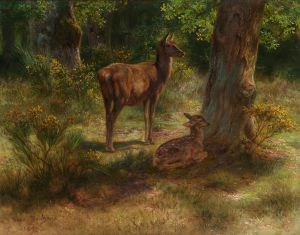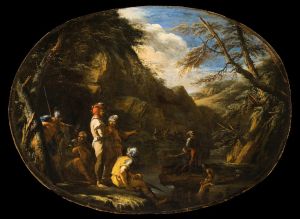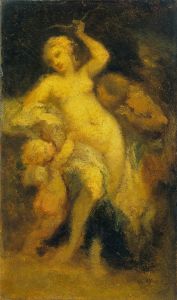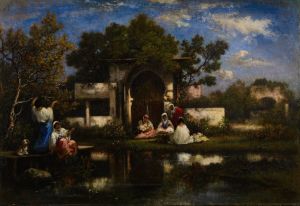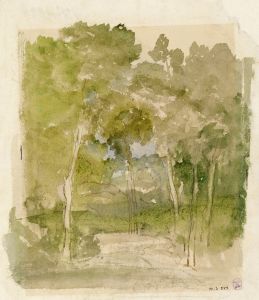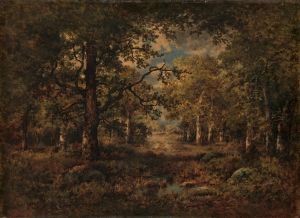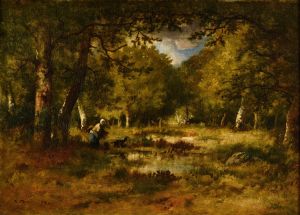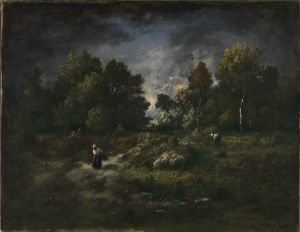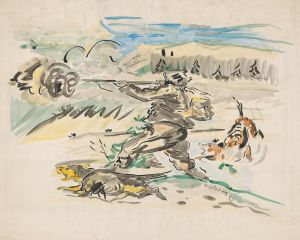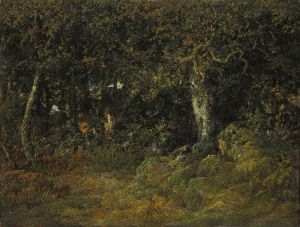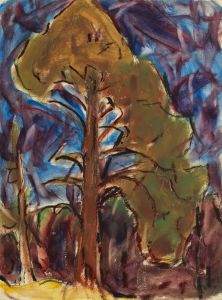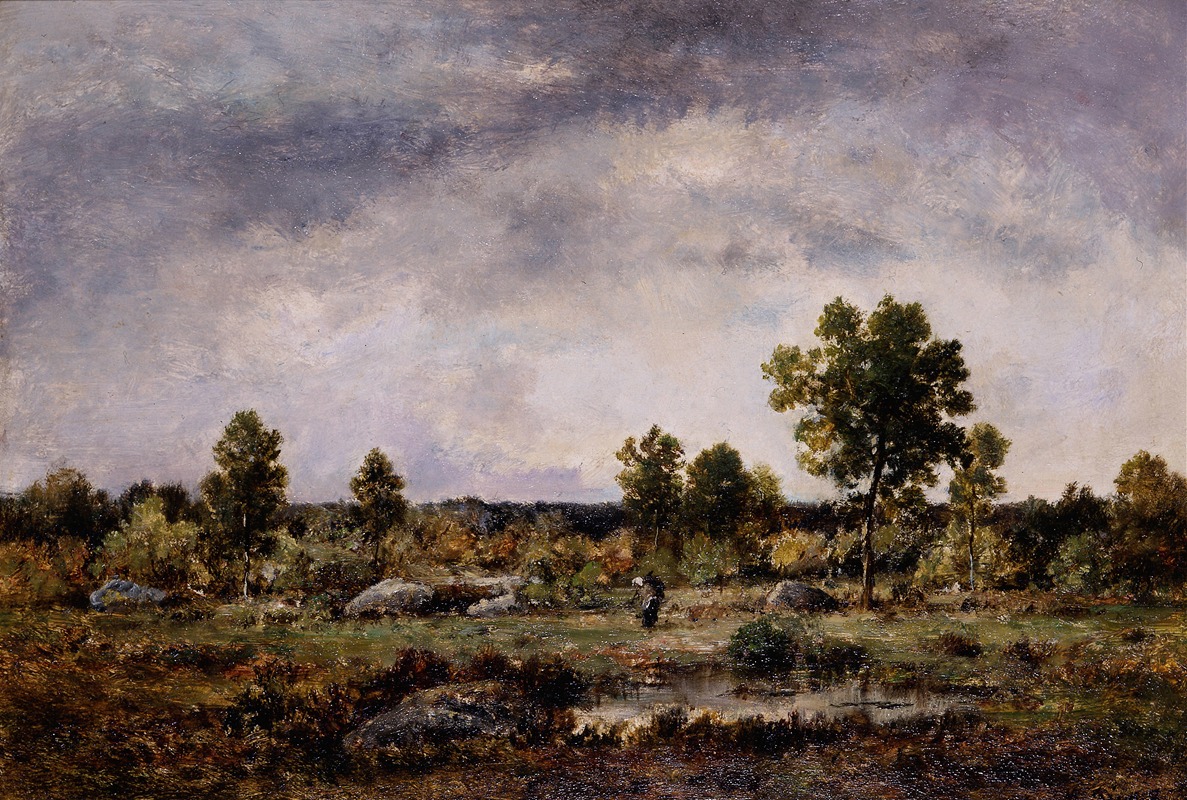
Clearing in the Forest
A hand-painted replica of Narcisse-Virgile Diaz de La Peña’s masterpiece Clearing in the Forest, meticulously crafted by professional artists to capture the true essence of the original. Each piece is created with museum-quality canvas and rare mineral pigments, carefully painted by experienced artists with delicate brushstrokes and rich, layered colors to perfectly recreate the texture of the original artwork. Unlike machine-printed reproductions, this hand-painted version brings the painting to life, infused with the artist’s emotions and skill in every stroke. Whether for personal collection or home decoration, it instantly elevates the artistic atmosphere of any space.
Narcisse-Virgile Diaz de La Peña (1807-1876) was a prominent French painter of the Barbizon school, known for his richly colored landscapes and genre scenes. One of his notable works is "Clearing in the Forest," which exemplifies his mastery in capturing the natural beauty and atmospheric effects of the forested landscapes that were central to the Barbizon movement.
"Clearing in the Forest" is an oil painting that showcases Diaz de La Peña's skillful use of color and light to create a vivid and immersive scene. The painting depicts a sunlit clearing within a dense forest, where the interplay of light and shadow brings the scene to life. Diaz de La Peña's brushwork is characterized by its fluidity and expressiveness, which adds a sense of movement and dynamism to the composition.
The Barbizon school, to which Diaz de La Peña belonged, was a group of mid-19th-century French painters who settled in the village of Barbizon near the Forest of Fontainebleau. They were pioneers in the shift from the classical landscape tradition to a more naturalistic and direct observation of nature. Diaz de La Peña, along with other members of the Barbizon school such as Théodore Rousseau, Jean-François Millet, and Charles-François Daubigny, sought to capture the transient effects of light and atmosphere in their work.
In "Clearing in the Forest," Diaz de La Peña employs a warm and earthy palette, with rich greens, browns, and touches of golden sunlight filtering through the trees. The composition is balanced, with a central clearing that draws the viewer's eye into the depth of the forest. The trees are rendered with a combination of broad, sweeping strokes and finer details, creating a textured and layered effect that enhances the realism of the scene.
Diaz de La Peña's approach to painting was influenced by his admiration for the works of earlier landscape painters such as John Constable and Richard Parkes Bonington. However, he developed his own distinctive style that emphasized the emotional and sensory experience of being in nature. His ability to convey the mood and atmosphere of a forest clearing, with its serene yet vibrant quality, is a testament to his artistic talent.
"Clearing in the Forest" reflects Diaz de La Peña's deep appreciation for the natural world and his commitment to capturing its beauty on canvas. The painting is a fine example of the Barbizon school's contribution to the development of landscape painting in the 19th century, bridging the gap between the Romantic and Realist movements.
Today, works by Narcisse-Virgile Diaz de La Peña, including "Clearing in the Forest," are held in various public and private collections around the world. His paintings continue to be celebrated for their technical excellence and their ability to evoke the timeless allure of the natural landscape.





